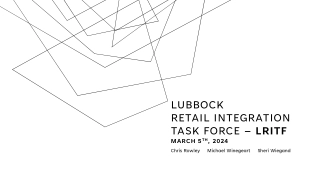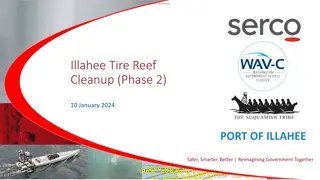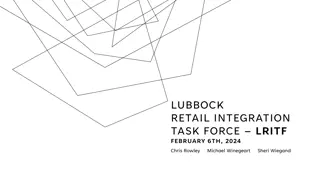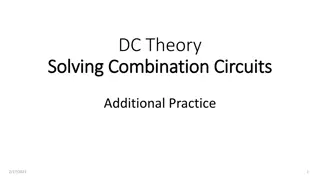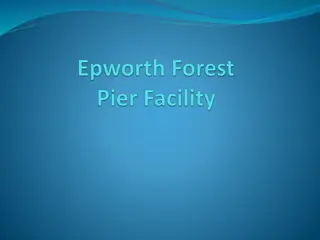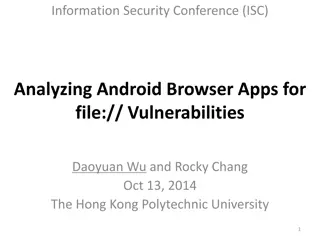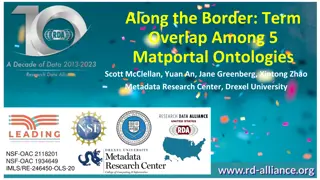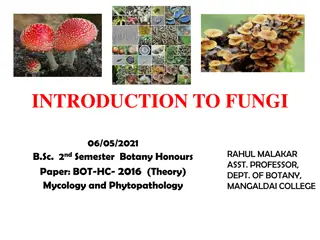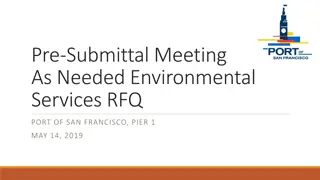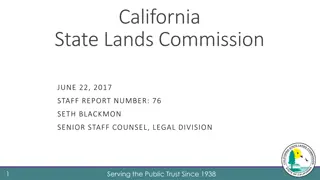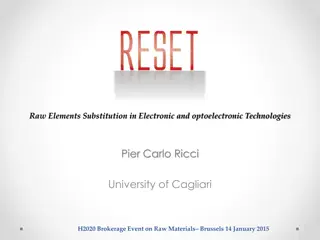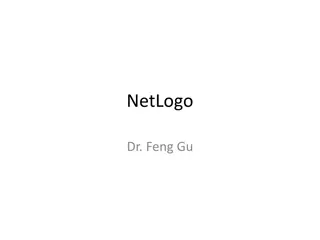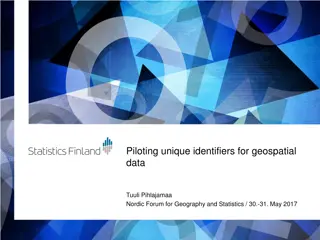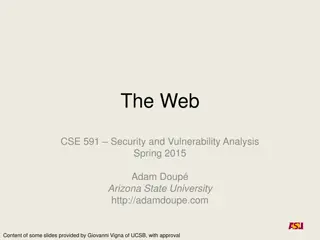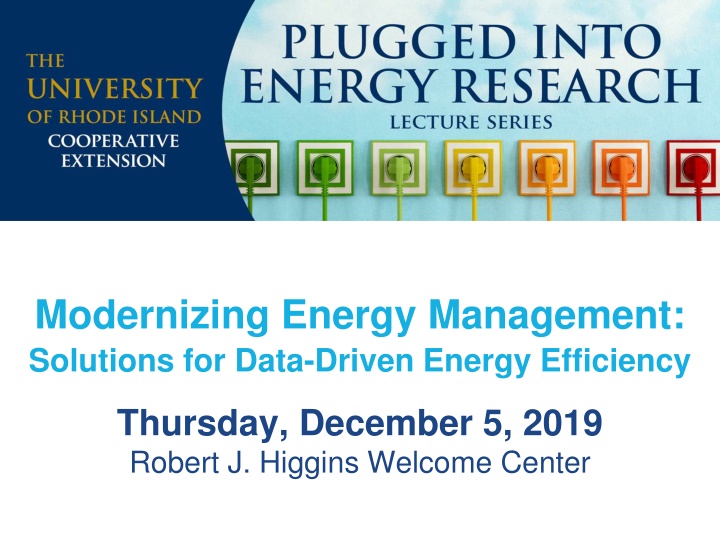
Sustainable Manufacturing Innovations and Solutions for Energy Efficiency
Explore how sustainable manufacturing practices and energy management solutions are driving efficiency and reducing environmental impact. Discover cutting-edge engineering innovations and research insights for making sustainable routing decisions in manufacturing companies.
Download Presentation

Please find below an Image/Link to download the presentation.
The content on the website is provided AS IS for your information and personal use only. It may not be sold, licensed, or shared on other websites without obtaining consent from the author. If you encounter any issues during the download, it is possible that the publisher has removed the file from their server.
You are allowed to download the files provided on this website for personal or commercial use, subject to the condition that they are used lawfully. All files are the property of their respective owners.
The content on the website is provided AS IS for your information and personal use only. It may not be sold, licensed, or shared on other websites without obtaining consent from the author.
E N D
Presentation Transcript
Modernizing Energy Management: Solutions for Data-Driven Energy Efficiency Thursday, December 5, 2019 Robert J. Higgins Welcome Center
Sustainability in Manufacturing: Cutting-Edge Engineering Innovations Manufacturers Need to Know DR. VALERIE MAIER-SPEREDELOZZI Associate Professor, URI Department of Industrial & Systems Engineering Global warming, a growing world population, and the development of global markets have shifted companies toward a new paradigm sustainable manufacturing. Dr. Maier-Speredelozzi will share her research on how equipment decisions and production routings can be characterized in terms of their sustainability; she ll propose an approach for use in identifying opportunities for sustainable manufacturing. Dr. Valerie Maier-Speredelozzi earned her Ph.D. and dual Master s degrees from the University of Michigan in Mechanical Engineering and Industrial and Operations Engineering, respectively. Her research interests include lean manufacturing, sustainability, healthcare, human factors and system design. For more information about Valerie s research and teaching interests, please visit www.linkedin.com/in/valerie-maier-speredelozzi-1a12882/.
Sustainability in Manufacturing: Cutting- Edge Engineering Innovations Manufacturers Need to Know Associate Professor Valerie Maier-Speredelozzi Graduate Student Christoph Gerdes Mechanical, Industrial and Systems Engineering
Sustainable development meet the needs of the present without compromising the ability of future generations to meet their own needs (Brundtland-Report, 1987) Triple bottom line must also be considered in manufacturing (Herrmann et al., 2014) New paradigm of manufacturing: Sustainable Manufacturing (Thiede, 2012) (Herrmann, 2010)
Sustainability Definition Sustainability G R E E N H U M A N L E A N
Motivation Rising energy prices Actions of industrial companies for a more sustainable manufacturing are required (Duflou et al., 2012) Global emissions Bring economic, ecological, and social goals to an agreement (Thiede, 2012) (Reich-Weiser et al., 2010) Growing world population Need to take sustainability into account for routing decisions (Bunse et al., 2011) (Herrmann, 2010) (Duflou et al., 2012) (Thiede, 2012)
Objective Develop a method for manufacturing companies to make sustainable routing decisions Ensure practicality (case study approach) Define performance indicators to assess sustainability Provide guidelines for decision making Establish a general method that is scalable for various applications
Approaches for sustainable manufacturing supply chain level Energy Flows Electrical energy (Thiede, 2012) (Drake et al., 2006) Compressed air system level (Saidur et al., 2010) (Gauchel, 2006) machine level Material Flows Lubrication oils (Sarhan et al., 2012) (Miller et al., 2007) Material waste (Saidur et al., 2010) (Gauchel, 2006) product level
Evaluation Techniques Sustainable Value Stream Mapping (Sus-VSM) Life Cycle Assessment (LCA) Evaluate the environmental impact of processes and products Considers the total life cycle of a product Approach can be streamlined for specific purposes Visualize the manufacture of a product Show material and information flows Add metrics to display the sustainability of processes to traditional VSM Different approaches in literature (Faulkner & Badurdeen, 2014) (Erlach & Westk mper, 2009) (Kuriger & Chen, 2010) (Hochschorner & Finnveden, 2003) (Todd & Curran, 1999)
VSM: Value Stream Mapping http://www.leansimulations.org/2011/09/value-stream-map-examples.html
SUS-VSM: Sustainable Value Stream Mapping Faulkner, Badurdeen (2014)
LCA: Life Cycle Analysis
Obstacles for Manufacturing Companies New method must consume less resources and must be easily applicable in companies Categories: Lack of metering capabilities Lack of financial resources Lack of expertise and training Tradeoffs between performance factors Gap between literature and practice Market failure Organizational Institutional Behavioral (Chai & Yeo, 2012) (Thiede et al., 2012) (Chai & Yeo, 2012)
Process Mapping Methodology Case Study Approach: Data Acquisition Company in the thermal management industry Selection of Metrics Measuring Procedure Medium-sized plant Data Visualization Certain size of product family Front case is investigated Functional unit: One part Data Analysis
Flexible Routing Routing = Sequence of workstations to produce a part or product (Hopp and Spearman, 2001) Flexible Routing to: Face unpredictable events (Browne et al., 1984) Avoid deadlocks (Lawley, 1999) (Ezpeleta et al., 2002) Optimize a production system in terms of costs and times (Yao & Pei, 1990)
Process Mapping 6 possible routings
Data Acquisition Selected Process Metrics: Data is collected from available information or measured on the shop floor Gathered data is processed for functional unit Procedure and calculations are explained
Example: Compressed Air Measuring Procedure: Amount of compressed air per time is measured Consumed volume per part is identified by multiplication with processing time Leakage factor accounts for losses in pipe lines Generation efficiency of compressor is identified to assess energy consumption ?????? ??????????? (??) = ??????????? ???? ???? ??????? ?????? ?????????? ??????????
Example: Compressed Air Measurement Results:
Data Visualization Material handling time Processin g time Number of material handlings Sustainable value stream mapping: Data box to display sustainability of processes Cycle time Changeov er time Water usage Oil usage Scrap Electrical energy and Compressed air Energy Intensity (Idle + Processing) Inventory data for routings Raw material Noise level Information flow to control the production
Data Analysis Economic Perspective Cost evaluation: Cost categories Assessment of total costs of each process Labor costs Energy costs Material costs Lubrication oil costs Water costs Consumables costs Definition of cost categories Identification of adequate cost factors Calculation of costs per part
Data Analysis Economic Perspective Analysis Results:
Data Analysis Environmental Perspective Life Cycle Assessment (LCA): Usage of software Umberto NXT LCA Consideration of raw materials phase + manufacturing phase Generic data from database ecoinvent Two impact categories: Global warming potential (GWP) Acidification potential (AP)
Data Analysis Environmental Perspective Analysis Results: Raw materials + manufacturing phase
Data Analysis Environmental Perspective Only manufacturing phase
Comparison of Routings - Economic
Comparison of Routings - Environmental
Comparison of Routings - Overall Routing 2 best overall option least costs least environmental impact Routing 5 is cheaper than routings 1 + 3 Routing 5 has a higher GWP than routings 1 + 3 Preferences on performance indicators need to be set for decision making
Finding trade offs Setting preferences: Two examples: Total costs 1:1 Global warming potential Total costs 3:1 Global warming potential Normalization of data to compare values with one another
Finding trade offs Setting preferences: Two examples: Total costs 1:1 Global warming potential Total costs 3:1 Global warming potential Normalization of data to compare values with one another
Benefits of sustainable routing decisions Best case scenario: Routing 2 Most frequently used: Routing 3 Savings per part from switching routings:
Benefits of sustainable routing decisions Annual savings from switching routings: Considering the whole product family Annual volume of 11,642 units Requirements for switching routings must be examined (machine capacities) Potential savings are additional incentive for investigated company to think about new investments
Achievements New method for sustainable routing has been developed Practicality proven by case study Benefits of the method have been presented Step-by-step approach that can be used as guidance for the improvement process Designed conceptually to be scalable for individual applications
Discussion Limitations of the approach (Dis-)advantages of method could be different for other cases Requirements for routing decisions must be considered Limited number of metrics; social dimension briefly addressed Preferences in example are not based on specific targets
Further Research Prove general applicability of method Case studies Performance indicator to represent all three dimensions Machine capacities Productivity issues Trade- offs Requirem ents Revisi on of Meth od Identification and evaluation of adequate metrics Societal impact Similarities to other methods Synergies
Questions Dr. Valerie Maier-Speredelozzi valerie@uri.edu 401-874-5187 Mechanical, Industrial and Systems Engineering


